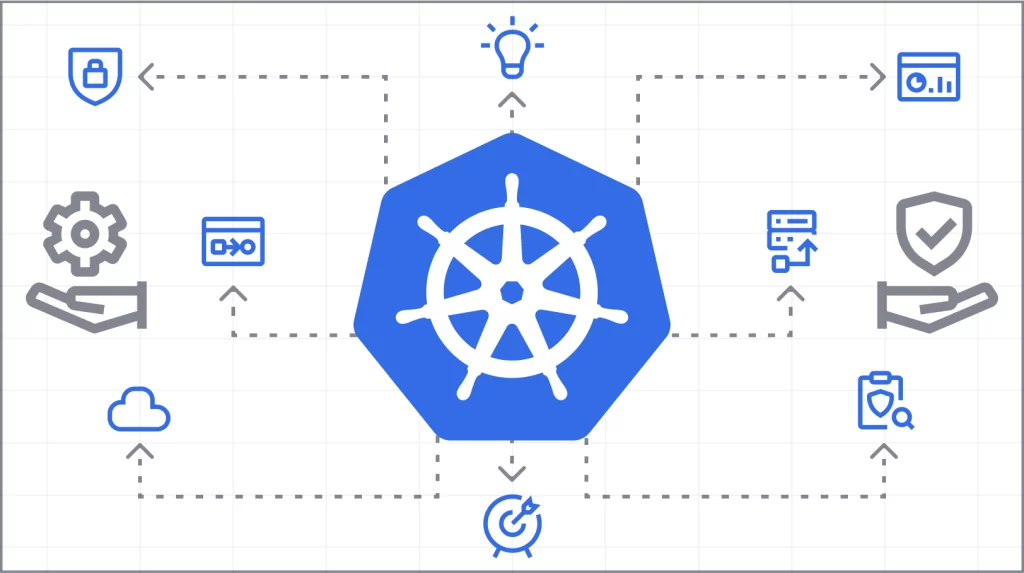When to Build vs. Buy Software: The Pros & Cons
The modern enterprise is plagued by the decision of whether to build custom software or to buy a commercial off-the-shelf (COTS) solution.
With technology evolving, the build vs. buy software decision is getting more complicated. The way we build custom software has changed. And with these new technologies, organizations can now realize higher ROI and faster time-to-market.
Read on for a build vs. buy analysis and examples of companies that made the decision.

Buying software – pros and cons
Historically, building custom software has been expensive and time-consuming. Fifty-three percent of projects cost 189% of the original estimate, and organizations cancel 31% of build projects.
When considering a build vs. buy software decision, companies have typically looked toward buying commercial-off-the-shelf (COTS) software over the past 20+ years.
It makes sense, too. COTS products offer a better upfront value. They’re readily available and require less setup.
But even the best solutions have their downsides.
A COTS solution’s biggest strength is also its greatest weakness: It’s designed for the masses. It’s a one-size-fits-all solution to common problems, like the need for an ERP system or a simple claims processing tool.
Because of this, you have to look closely at the cons of buying software off the shelf because of potential delays in software updates and extensive customizations for integration.
| Pros of buying software | Cons of buying software |
| Quickly deploy and utilize features tailored to common business needs | Limited customization and flexibility |
| Cost-effectiveness and lower initial investment | Costly customizations and licensing fees |
| Rely on software’s proven track record with a history of successful implementation | Inclusion of features that may not align with org’s specific needs |
| Dependent on vendors for maintenance and updates, with potential for vendor lock-in |
When to buy software
When choosing the best software solution, buying may be best if:
You don’t need any customization
Buying a COTS solution may be the best choice if you need a fast, straightforward product.
However, it may only address a short-term business solution. As the needs of the business grow and change, you may need something that can evolve along with it.
You need a predictable cost
As we’ve previously mentioned, customized solutions can quickly balloon in costs. Buying a software solution ensures that you know the cost upfront, which is a huge benefit if you have a strict budget you need to stick to.
You need a software solution fast
Building a custom solution can take up to six to nine months — and that’s if everything goes smoothly! But if you need a fix yesterday, buying an off-the-shelf software may be a good fit.
Building custom software – pros and cons
Professional developers may find the promise of building software tempting. And while buying COTS may be faster, it also can feel limiting. If your company has specific needs and requirements, the best option is to build.
The pros of building software enable companies to deliver tailor-made solutions that match your organization’s strategic needs.
The flipside of the build coin is that developers are a hot commodity. It’s increasingly difficult to fill software developer roles, with these jobs taking 80 days to fill (compared to just 42 days for non-developer roles). Talent scarcity is just one of the cons of choosing to build a software solution.
| Pros of building custom software | Cons of building |
| Build software that fits your needs | Developers may need additional time to learn about the company’s needs |
| More easily integrate software into your IT infrastructure | A larger investment of time and money upfront |
| Differentiate from competition | The software development lifecycle has a longer timeline |
| Update software as needed | Good developers are hard to find |
When to build custom software
Choosing to build a software solution may be best if:
You need a combination of different functions and capabilities
When companies need a long list of different capabilities, they may need to buy several off-the-shelf solutions and cobble them together. Building software gives companies the opportunity to create a custom solution that addresses all of their business needs.
You have the resources
If you have a bigger budget, you may be able to build exactly what you’re looking for. Additionally, if you already have the existing resources – like software developers – available, building may be the solution you need.
You want a solution that can grow with your business
There is usually a larger up-front investment when building a software solution with traditional development. However, building custom software allows you to make modifications as your company grows and changes.
Building software with low-code
Using traditional coding methods to build a complex application might sound intimidating (and expensive). Companies don’t just have to choose between build vs. buy. There’s a third choice: low-code application development.
Gartner predicts that by 2025, 70% of new applications developed by enterprises will use low- or no-code technologies.
Low-code has changed the way we develop software applications. It comes with its own pros and cons. The pros include:
- Increased collaboration between teams, especially those without coding experience
- Accelerated development lifecycle
- More consistent feedback, especially when utilizing Agile workflows
- Increased ability to take full control of the application development lifecycle
- Reduced long-term costs
Consider the following when building with low-code.
| Pros of building a custom low-code solution | Cons of building a custom low-code solution |
| Tailor to specific organizational needs– Craft solutions that precisely match unique requirements | Time and talent- Building with low-code still requires time and skilled people, but not as much time as traditional development |
| Complete control over features and functionalities- Enjoy the freedom to shape every aspect of the application | Higher upfront costs- Your initial investment may be substantial compared to COTS alternatives, but low-code ROI adds up in the long run |
| Potential for long-term cost savings- Customization allows optimization for cost efficiency | |
| Easily leverage AWS- Mendix’s strategic alliance with AWS lets you integrate with powerful AWS capabilities |
Build vs. buy software: How to make the decision
Here’s how you can determine whether a COTS solution, building custom, or building with low-code is the right path for you.
- Assess your needs: are you going to require a lot of change? Are there a lot of bespoke requirements for your organization?
- Perform a requirements gap analysis on any COTS solutions
- Look into the scalability and flexibility of the solution
- Perform a total cost of ownership analysis to unveil any hidden expenses
If you find a COTS that genuinely fits your organizational needs, or there’s a willingness to adapt your processes to it, go for it. For almost everything else, build it yourself with low-code. It’s a surefire bet to assure the solution fits and you’re keeping costs down.
How other companies made the build vs. buy decision
NC State University chose to build vs. buy.
Units across the NCSU campus had developed solutions for non-credit registration management using SharePoint, Access, sticky notes, and spreadsheets. The data disparity created inefficiencies, so the university sought a new way to manage its non-credit enrollment system.
Time, budget, and other resource constraints made building a custom Java application in-house unfeasible, so NCSU opted to release an RFP. The quotes they received from COTS vendors were staggeringly high: $3-10M over five years.
Using low-code, a team of student interns built an MVP of the system called REPORTER, in just over two months. Three months later, they launched the full system. The total cost in money and time of REPORTER: low six-figures and six months to release.
Saga Healthcare is the UK’s leading elder advocate. With low-code development, Saga entered a new market and extended the commitment and services they offered their customers.
Saga was looking to develop a new system to provide home health care services to seniors. In the build vs. buy software paradigm, Saga started out looking at outsourcing development for a custom application. After being quoted by a vendor for £12M with a three-year build time, Saga looked for other options.
CEO Lance Batchelor inspired the IT team to use unconventional thinking to consider alternatives. Following this directive, Saga IT decided to develop with low-code. The IT team built a care-at-home scheduling system, SACHA, in just six months for less than £250k — a cost savings of 97.9%.
The best of both worlds
Still on the fence about whether to build, buy, or build with low-code? The Mendix platform also offers a middle ground: ISV adaptable solutions. These Mendix-built solutions combine the advantages of COTS solutions with a high degree of customization.
Adaptable solutions come without the potential pitfalls found in creating a tangled web of legacy code or grappling with complex customization standards. With Mendix’s ISV adaptable solutions, you’re buying a standardized solution that solves a specific need, while keeping the advantages of easy customization you find with low-code.
- Research Shows How Employee Experience Impacts Customer Experience
- 5 Ways to Improve Agile Team Communication & Trust
- Top 3 Benefits of Automation for Customer & End-User Experiences
- How to Execute a Digital Transformation: 9 Factors for Success
- How to Architect Your Mobile Customer & Employee Experiences
Bài viết cùng chủ đề:
-
Leave Request – Quản lý nghỉ phép thông minh trong một mô-đun CRM duy nhất
-
Techworld Solutions Đồng Hành Cùng UTE Trong Đào Tạo Nhân Lực Chất Lượng Cao
-
Microsoft Office chính thức chuyển thành Microsoft 365
-
Epicor Asia & Techworld Solutions Vietnam Chính Thức Công Bố Quan Hệ Đối Tác Chiến Lược, Mở Rộng Hệ Sinh Thái Giải Pháp Tại Việt Nam và Khu Vực
-
Chúc mừng đội ngũ Microsoft!
-
Giá trị của Microservices Doanh Nghiệp với Low-Code
-
Sự Tiến Hóa Tiếp Theo Của Mendix Cloud: Đón Nhận Kubernetes Để Xây Dựng Nền Tảng Sẵn Sàng Cho Tương Lai
-
Optimizing Production with Epicor ERP – Specialized Solutions for Complex Industries
-
Addressing the Knowledge Gap
-
AI-Assisted Development in Action with Mendix
-
Empowering Mobile Innovation
-
How to Upgrade Legacy Systems to Compete in the Cloud Age
-
TECHWORLD SOLUTIONS VIỆT NAM VÀ ĐẠI HỌC SPKT ĐÀ NẴNG KÝ KẾT HỢP TÁC TRIỂN KHAI TRUNG TÂM NGHIÊN CỨU & ĐÀO TẠO CÔNG NGHỆ SỐ
-
How to Architect Your Mobile Customer & Employee Experiences
-
PVI Gia Định Partners with Techworld Solutions Vietnam to Revolutionize Insurance Management
-
ESEC Group Partners with Techworld Solutions Vietnam to Implement Microsoft Dynamics 365 ERP

















